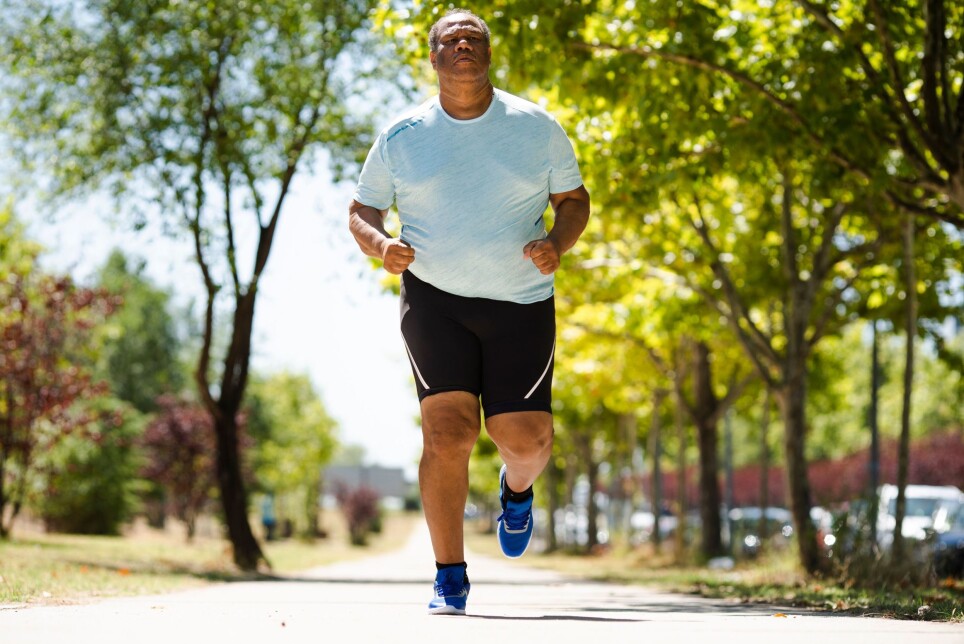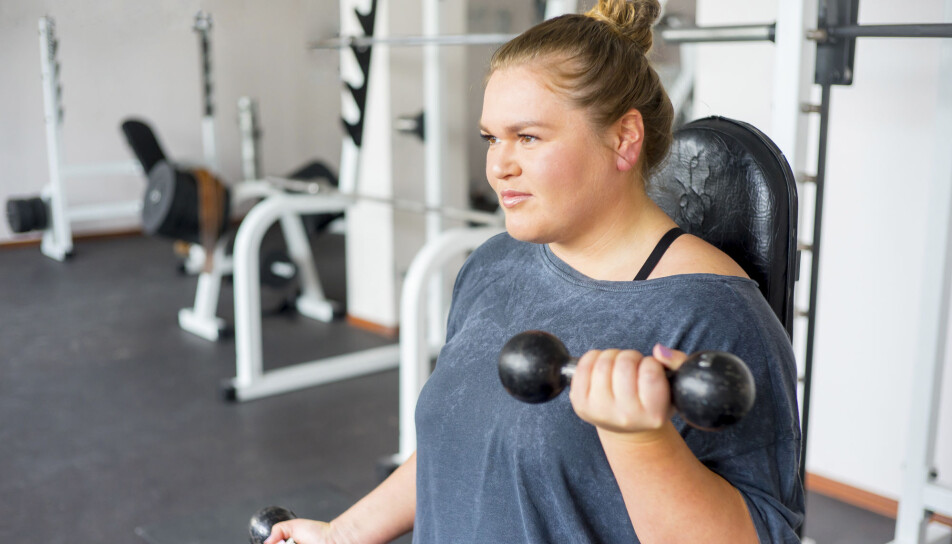This article was produced and financed by The Norwegian School of Sport Sciences - read more

Exercise provides healthier fat, which helps deter diabetes
An old study and some mice have provided important knowledge for diabetics. When we exercise, our fat cells behave differently.
This has been demonstrated by a new American study conducted using mice and data from tests done by the Norwegian School of Sports Sciences (NIH) back in 2013.
The results of the study have provided impressive advances in research into diabetes. They may prove extremely important, not least given the high number of people who suffer from type 2 diabetes.
People who have type 2 diabetes are much more vulnerable to severe health issues, and many die at a much younger age than would have been normal. Moreover, their families and society have to pay a high price. The families because of worries and a too early loss, the society because of billions spent on long-term treatment.
Type 2 diabetes is often caused by a combination of genetics, overweight, bad diet and not enough physical activity.
Being overweight is a decisive risk factor when it comes to developing type 2 diabetes, as it is leads to unbalanced levels of insulin and sugar in the body.
Stimulating the fat
A new study has now shown however, that the fatty tissue is in itself important.
The study, which builds on data from the NIH, shows that the so-called oestrogen receptors in the fatty tissue are important in regulating insulin.
Said differently, the quality of your fatty tissue is important for:
- burning sugar (or glucose, as the professionals call it),
- reducing the volume of fat in your body and thereby also…
- …reducing the risk of diabetes.
To achieve this, we have to “stimulate the fat”. Physical activity helps.
We are all aware that physical activity is healthy, but the fact that it also affects the fatty tissue which in turn affects so much else, is all new.
Exercise for a better balance
The story starts in 2013 when the two bachelor students, Kristoffer Kolnes and Daniel Tangen, were assigned the responsibility for preparing a weight training programme for a major study.
The programme involved monitoring 26 middle-aged men over a period of 12 weeks, with physical exercise four times a week. Half of the men were overweight and with poor blood sugar regulation. (“Overweight” is normally understood as having a BMI above 25. It is easily calculated.)

All the participants improved their oxygen intake, strength and – most importantly: their insulin sensitivity.
Put simply, this means that the insulin in the body, tasked with keeping our blood sugar in balance, starts working properly again.
When your blood sugar is out of balance, you are more exposed to a number of health problems, like type 2 diabetes.
Complex connections
After the period of 12 weeks, the participants were voluntarily measured and tested. Biopsies (small tissue samples) were taken from their muscles and fatty tissue, with measurements taken of the volume of muscle and fatty tissue, and tests were performed of their so-called RNA.
This is quite a complex process technically. However, the vast data material it produced, including printouts from 12,000 genes from each tissue sample, made it possible to identify which genes are associated with for instance maximum oxygen intake – and insulin sensitivity.

Important female hormones in men
The professionals in the USA are now benefiting hugely from this study. Professor Andrea Hevener and some of her colleagues at theUCLA in California have utilised the data for a major experiment using mice. And they have established that so-called oestrogen receptors are important for both insulin sensitivity and metabolic rate (via the mitochondria in the fatty tissue).
Oestrogen is the female hormone, but men – including those who took part in the NIH tests – have some oestrogen in their bodies. And this has an impact on fatty tissue. Naturally, our metabolic rate is important in relation to how much fat you have on your body.
The links are complicated, but this means:
- That fatty tissue helps control our metabolic rate and, as a result, both our health and weight.
- That exercise has an effect on the fatty tissue, improving both insulin sensitivity and blood sugar balance and reducing the volume of fat on our bodies.
- That a healthier fatty tissue helps reduce the risk of type 2 diabetes.
Exercise and tests
“It’s great that the work our NIH students carried out has been decisive in advancing the research, and is used by scientists worldwide,” says Jørgen Jensen. He is a Professor at the Department of Physical Performance at the NIH, and has followed the two students throughout the process.
“NIH has a high level of expertise in preparing exercise tests, so-called exercise interventions, and conducting physiological measurements, and we are proud to have created the foundations for a data set that is utilised so extensively,” he says.
To date, the data from the NIH has formed the basis for close to 30 different scientific articles. Jensen is quite proud of his old students.
“We would not be able to carry out successful and comprehensive exercise studies without skilled students”, he says.
“A number of other students were also involved in the project, but these two played a very central role. They were, for example, responsible for the entire weight training programme.”
Important in combating diabetes
The study on mice uncovered several new mechanisms that may prove very important in deterring diabetes. Once you have found such connections or mechanisms, you can then start to find ways to adjust them.
“This means that it may not only be necessary to exercise to get healthier, but that we can search for other ways to affect the processes in our bodies and find medical treatment for those who do not exercise,” says Jensen.

He also believes that many people will be happy to know what happens in their bodies when they exercise.
Not surprised
One of the two students mentioned by Jørgen Jensen, Daniel Tangen, says that he is not surprised by the praise they have received or the value of the study.
“There were very few proper studies involving exercise for insulin resistance, and this was a comprehensive study during which we made a number of new discoveries,” he says. Tangen currently works as the coach for the national women’s alpine skiing team.
He wrote his Master's thesis at the NIH on the basis of the study. His thesis related to strength and stamina, comparing persons with normal weight to overweight persons with insulin resistance. “Regular exercise is incredibly important for persons with type 2 diabetes,” he says.
The other student, Kristoffer Kolnes, is halfway through a doctoral degree on fat cells and diabetes at the University of Southern Denmark in Odense, Denmark.
Achieved healthier fat
What happened to the participants in the exercise programme?
They did not lose weight, even though they lost an average two to three kilograms of fatty mass. This was literally weighed up for in increased muscles.
However, the fat remaining also had improved function. Good fatty tissue produces, for example, leptin, a hormone that controls hunger.
“Without leptin, you would be hungry all the time, and things would go wrong very quickly,” explains Jørgen Jensen. “It is a fact that fatty tissue communicates with other types of tissue, and a healthier fatty tissue – with exercise – sends more correct messages to your body.
Not only were the participants fitter, they also had healthier fatty tissue after the study.”
———
Read the Norwegian version of this article on forskning.no


































